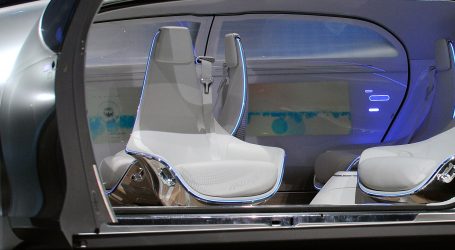Underwater Villas and Wooden Skyscrapers: When Technology Meets Architecture

Technology has no limitations – from airplanes to driverless cars, we now have underwater villas and wooden skyscrapers.
Although the idea of using wood as the main material in buildings is not new, it hasn’t been tested in creating tall skyscrapers. However, this does not stop maverick architects to create wooden mammoths that rival their concrete cousins.
One of the first of these wooden skyscrapers is the 10-story Forte residential block in Melbourne, Australia which was built in 2012. Two years after, Norway built a 14-story wooden tower called The Treet. However, The Treet’s reputation as being the world’s tallest wooden structure was short-lived because London stole it from them when it built the Cube, a 109-feet apartment block in Shoreditch.
Now, wooden skyscrapers are catching fire as other countries propose to build their own higher and better versions. In Canada, they are already building the 18-story Tall Wood building which will stand at 174 feet. Meanwhile, Cambridge University’s Department of Architecture is collaborating with PLP Architecture to build a 1000-foot 80-story tower in London called Oak Tower.
There are still doubts, however, regarding the use of wood as they can easily burn or rot. Kevin Flanagan, a partner of PLP Architecture, states that there is great possibility in the future to genetically modify wood to “make it even more conducive to high-rise construction.”
Dr. Michael Ramage, of the Center for Natural Material Innovation at Cambridge University, said that “there is a whole bunch of new materials made out of wood that are structurally able to build big buildings.”
He also added that they are doing research on various construction techniques that involve timber. In fact, he said, the Oakwood Tower will “exceed the fire standards of regular steel and concrete buildings.”
Aside from wooden skyscrapers, technology has also allowed architecture not only to soar higher but to dive deeper. Another engineering and architectural feat making waves nowadays is the underwater villas in Dubai.
Called the Floating Seahorse Villas, each unit has three stories with one story submerged underwater and equipped with two 9.5-centimeter thick, 25-square meter windows which allow occupants to have an amazing view of underwater life.
The windows are not made of glass since it cannot withstand underwater pressure. Rather, it is made of acrylic, the same material used in aquariums and submarines which gives you a crystal-clear view of life under the sea. Moreover, it is tough enough to withstand seawater for many years. On the inside, the teak and marble are used because they have good resistance against salt and temperature.
For those who are wondering whether the floating villas are stable when the waves are strong or safe during a storm, Gianfranco Rasile, project architect of the floating villas, said that they have conducted multiple trial runs and careful calculations in order to achieve perfection and, eventually, neutral buoyancy.
Josef Kleindienst, chairman of the property development company that builds the underwater villas, said that “people think it’s sitting on the seabed, but it’s [anchored] at least 1.5 meters off the bed, and it’s always going up and down every day with the tide movement.”
What’s Next?
Technology has made it possible for engineers and architects to create extraordinary construction feats in places which were deemed impossible to build using unconventional materials.
Wooden skyscrapers and underwater villas have shown that human ingenuity and technology enables us to do the impossible and, perhaps, a house in the moon or in Mars might also become a reality in the distant future.




